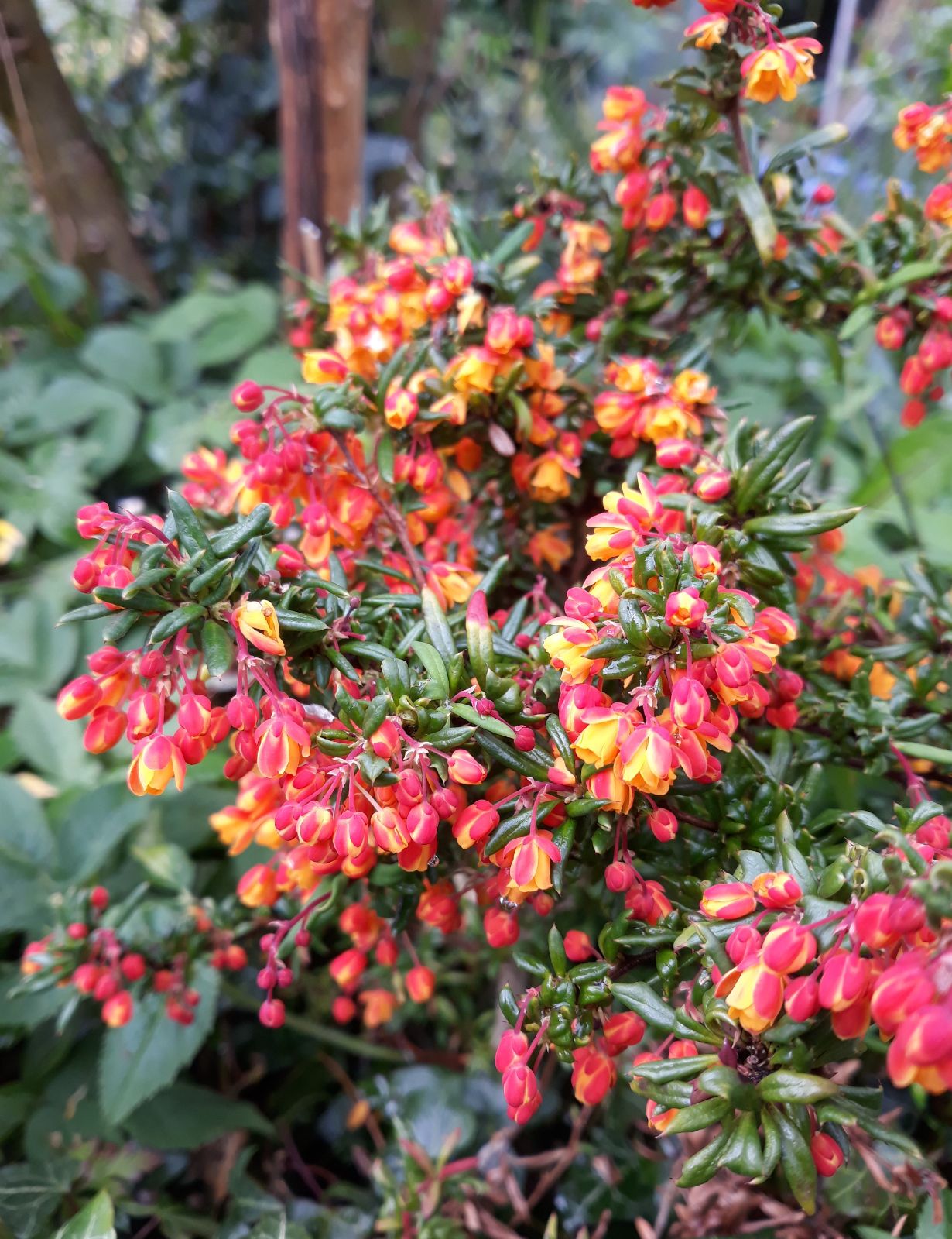Berberis × stenophylla
Credits
Article from Bean's Trees and Shrubs Hardy in the British Isles
Recommended citation
'Berberis × stenophylla' from the website Trees and Shrubs Online (treesandshrubsonline.
Genus
Synonyms
- B. × irwinii Byhouwer
Other taxa in genus
- Berberis actinacantha
- Berberis aetnensis
- Berberis aggregata
- Berberis angulosa
- Berberis aristata
- Berberis asiatica
- Berberis atrocarpa
- Berberis beaniana
- Berberis bergmanniae
- Berberis buxifolia
- Berberis calliantha
- Berberis canadensis
- Berberis candidula
- Berberis × carminea
- Berberis chillanensis
- Berberis chrysosphaera
- Berberis comberi
- Berberis concinna
- Berberis coxii
- Berberis cretica
- Berberis darwinii
- Berberis dasystachya
- Berberis diaphana
- Berberis dictyoneura
- Berberis dictyophylla
- Berberis empetrifolia
- Berberis fendleri
- Berberis francisci-ferdinandii
- Berberis gagnepainii
- Berberis glaucocarpa
- Berberis gyalaica
- Berberis hakeoides
- Berberis heterophylla
- Berberis heteropoda
- Berberis hispanica
- Berberis hookeri
- Berberis hypokerina
- Berberis ilicifolia
- Berberis incrassata
- Berberis insignis
- Berberis jamesiana
- Berberis johannis
- Berberis julianae
- Berberis kawakamii
- Berberis koreana
- Berberis lecomtei
- Berberis lepidifolia
- Berberis linearifolia
- Berberis lycioides
- Berberis lycium
- Berberis manipurana
- Berberis mitifolia
- Berberis montana
- Berberis morrisonensis
- Berberis mucrifolia
- Berberis orthobotrys
- Berberis poiretii
- Berberis prattii
- Berberis pruinosa
- Berberis replicata
- Berberis × rubrostilla
- Berberis sanguinea
- Berberis sargentiana
- Berberis sibirica
- Berberis sieboldii
- Berberis silva-taroucana
- Berberis soulieana
- Berberis sublevis
- Berberis temolaica
- Berberis thunbergii
- Berberis tischleri
- Berberis triacanthophora
- Berberis tsarongensis
- Berberis umbellata
- Berberis valdiviana
- Berberis veitchii
- Berberis vernae
- Berberis verruculosa
- Berberis virescens
- Berberis vulgaris
- Berberis wardii
- Berberis wilsoniae
- Berberis yunnanensis
- Berberis zabeliana
An evergreen bush 8 to 10 ft high, and as much through, consisting of a dense thicket of slender, interlacing stems arching towards the ends. Leaves numerous, in tufts about 1⁄2 in. apart on the shoots; hard, spine-tipped, 1 in. or so in length, 1⁄8 to 1⁄4 in. wide, with incurved margins; deep green above, glaucous beneath. Flowers produced either in small fascicles or on short, few-flowered racemes, golden yellow, small, but very profusely borne. Berries globose, 1⁄4 in. across, covered with blue-white bloom.
A hybrid which appeared in the nursery of Messrs Fisher & Holmes of Handsworth, near Sheffield, about 1860, its parents being B. darwinii and B. empetrifolia. It is perhaps the most beautiful and useful of all the barberries, and to the flower beauty of B. darwinii has united the greater hardiness of B. empetrifolia. The combination, moreover, has produced a grace of habit neither of the parents possesses. The bush forms an impenetrable mass of branches from out of which it throws every year slender, arching shoots 1 ft or more long. In the following April and May these are wreathed from end to end with rich golden-yellow flowers. A well-grown bush is one of the loveliest of all spring pictures, and is admirable in many positions; it makes a charming bush on a lawn, as a covering for a steep bank, and it may be used as a hedge plant, cutting it back immediately it has flowered. It is best propagated by cuttings put in very sandy soil under a bell-glass or in a frame in August. It ripens good seeds, but they rarely come true, reverting back more or less to one or other of the parents – generally to B. darwinii.
Many other forms of B. × stenophylla have been raised, which show the characters of the two parents in various combinations. The following is only a selection: ‘Coccinea’ (dwarf, with prettily coloured buds and flowers); ‘Corallina Compacta’ and ‘Gracilis Nana’ (both under 1 ft in height); ‘Crawley Gem’ (prostrate, with wiry, arching branches, raised by Messrs Cheal); ‘Gracilis’ (graceful habit, upright, to 4 ft high); ‘Pink Pearl’ (a sport with variegated leaves and round, pink flowers).
‘Irwinii’ was described as a distinct hybrid (B. × irwinii Byhouwer) but belongs to B. × stenophylla. It is a compact shrub to about 3 ft, inclining to B. darwinii in its foliage. Some other hybrids are near to B. darwinii and usually grown as varieties of that species, but all show to some degree the influence of B. empetrifolia and belong properly to B. × stenophylla. Such are ‘Nana’ and ‘Prostrata’.
From the Supplement (Vol. V)
Of the clones mentioned in the third paragraph on page 401, ‘Corallina Compacta’ is one of the most desirable. Not mentioned was ‘Semperflorens’, which is of compact habit and bears enough flowers precociously in autumn to make a display at that season; it received an Award of Merit in 1974, when shown from Kew. In ‘Pink Pearl’ the flowers are pink in bud but open white. It is an unstable clone, which originated in a Cornish garden (see Journ. R.H.S., Vol. 98, p. 12 (1973)).

